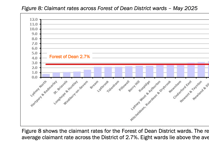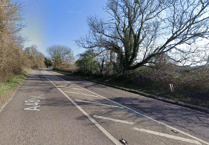FOREST of Dean technology experts Versarien are behind a revolutionary scheme to build 46 homes for homeless veterans and low-income families.
The Longhope-based company will use robots at the site in Accrington to concrete print the new homes for the Building for Humanity’s Charter Street project, which aims to complete 46 homes with a central community building. It will be the UK's first such development using this method.
A Building For Humanity spokesman said: "This £6million project will see us transform this disused piece of land into 46 high quality affordable net zero carbon ready homes with our own community hub on site.
“We will be concrete printing these buildings using the latest construction technology and this will not only be the first in the UK, but largest printed building of its kind in the whole of Europe at the time of construction.
"Together, we aim to make affordable home ownership and rental properties accessible across all demographics using advanced 3D concrete printing, but to do it at scale and to do it fast. There is a serious issue with the lack of affordable and social housing - we have the solution to create a sustainable, scalable housing system that provides a solution to the housing shortage."
Versarien announced to its investors on August 14, 2024 that it has signed a contract with Building For Humanity, with Versarien taking on the role as the ‘print partner’ for the work, helping deliver services for the flagship development.
Versarien told investors: "The contract, initially valued at approximately £200,000, will see Versarien providing 3D construction printing input at all stages of the project, giving Building For Humanity a full service from design to construction.
"Under the contract, Versarien will initially provide support to Building For Humanity, and the wider design team, to ensure alignment of the design with the 3DCP printing parameters, moving to the provision of staff and full printing services by the Company at the project's construction stage."
Building For Humanity states that a key advantage of 3DCP is its ability to reduce waste and minimise environmental impact by using sustainable materials including recycled plastics or biodegradable composites which can significantly reduce the carbon footprint of building projects and make construction sustainable
The printing technique uses concrete, polymers, and composites which are fed into the printer in a liquid or semi-liquid form and then solidified, layer by layer, to create the desired structure. The approach allows for greater flexibility in design and reduces waste during the construction process. The initial phase of the project will involve the construction of the first housing block and the community hub.
Dr Stephen Hodge, chief executive of Versarien, said: "We are delighted to be supporting Building For Humanity's Charter Street project using innovative 3DCP technology. This initiative is the first 3D housing construction project in the UK and one ideally suited to the services we can provide.
"This project is a pivotal opportunity to showcase Versarien's capabilities in enabling low‐carbon, efficient construction solutions, exemplifying our commitment to innovation and sustainability."





Comments
This article has no comments yet. Be the first to leave a comment.